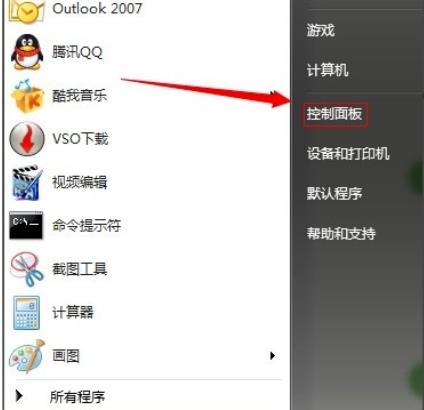The just-in-time (JIT) compiler improves the efficiency of Java code execution by compiling bytecode into machine code through the following steps: Monitoring and analysis: Identify hot methods. Compile: Compile bytecode to machine code, using machine-specific optimizations. Optimization: Further optimize the code to eliminate overhead, such as inlining methods. Advantages of JIT compilation include: Higher performance: Machine code executes faster than bytecode. Smaller memory footprint: bytecode is no longer retained after compilation. Better predictability: Machine code execution times are more predictable.

JIT Compilation in Java Virtual Machine
Introduction
Java Virtual Machine (JVM) uses a just-in-time (JIT) compiler to improve the execution efficiency of Java code. It dynamically compiles bytecode to machine code, eliminating the overhead of interpreting bytecode.
JIT compilation principle
JIT compilation is a staged process involving the following steps:
- Monitoring and analysis: JIT monitors the code that is executed when the application is running. It identifies hotspot methods, i.e. methods that are executed the most.
- Compilation: Once the hotspot method is identified, the JIT compiles the bytecode into machine code. It uses machine-specific optimization techniques to improve code efficiency.
- Optimization: JIT can further optimize code, such as eliminating overhead by inlining methods and eliminating unused code.
Advantages
JIT compilation provides the following advantages:
- Higher performance:JIT Compiled code executes much faster than interpreted bytecode.
- Smaller memory footprint: JIT compilation does not retain bytecode in memory, thus reducing memory footprint.
- Better predictability: JIT compiled code has more predictable execution times because it is machine code rather than bytecode.
Practical case
Consider the following Java method:
public int sum(int n) {
int sum = 0;
for (int i = 0; i < n; i++) {
sum += i;
}
return sum;
}When the JIT compiler identifies the sum method as a hotspot method, it compiles it into machine code. The compiled code will:
- Use registers instead of the stack to store variables.
- Use loop unrolling to reduce loop overhead.
- Inline addition operations to eliminate the overhead of method calls.
The result is a significant increase in execution speed.
The above is the detailed content of JIT compilation principle in Java virtual machine. For more information, please follow other related articles on the PHP Chinese website!
 Vue开发注意事项:避免常见的内存占用和性能问题Nov 22, 2023 pm 02:38 PM
Vue开发注意事项:避免常见的内存占用和性能问题Nov 22, 2023 pm 02:38 PM随着Vue的使用越来越广泛,Vue的开发者们也需要考虑如何优化Vue应用程序的性能和内存占用。本文将讨论Vue开发的一些注意事项,帮助开发者避免常见的内存占用和性能问题。避免无限循环当一个组件不断地更新自己的状态,或者一个组件不断地渲染它自己的子组件时,可能会导致无限循环。这种情况下,Vue将会耗尽内存并且使应用程序非常缓慢。为了避免这种情况,Vue提供了一
 如何在PHP8中使用JIT编译提升代码执行效率?Oct 19, 2023 am 11:52 AM
如何在PHP8中使用JIT编译提升代码执行效率?Oct 19, 2023 am 11:52 AM如何在PHP8中使用JIT编译提升代码执行效率?摘要:PHP语言一直以来以其简单易用和广泛应用而备受开发者青睐,但其执行效率一直被人诟病。然而,随着PHP8版本的发布,引入了JIT(Just-in-Time)编译器,为PHP的性能带来了巨大的提升。本文将介绍如何在PHP8中使用JIT编译器,并提供具体代码示例,以帮助开发者更好地理解和应用。引言:随着互联网应
 解决win7内存占用过高的步骤Dec 27, 2023 pm 10:27 PM
解决win7内存占用过高的步骤Dec 27, 2023 pm 10:27 PM电脑的内存空间取决了电脑的运行流畅度,时间一久内存就会爆满导致占用过高这样就会使电脑变得延迟,那么该怎么解决呢?下面就一起来看看解决方法吧。win7内存占用过高怎么办:方法一、禁用自动更新1、点击“开始”打开“控制面板”2、点击“Windowsupdate”3、点击左侧“更改设置”4、选择“从不检查更新”方法二、软件删除把没用的软件全部卸载。方法三、关闭进程把没用的进程都结束,不然很多后台都会有广告占满内存。方法四、禁用服务很多系统中没用的服务也关闭,既保证了安全也节省了空间。
 全面指南:详解Java虚拟机安装过程Jan 24, 2024 am 09:02 AM
全面指南:详解Java虚拟机安装过程Jan 24, 2024 am 09:02 AMJava开发必备:详细解读Java虚拟机安装步骤,需要具体代码示例随着计算机科学和技术的发展,Java语言已成为广泛使用的编程语言之一。它具有跨平台、面向对象等优点,逐渐成为开发人员的首选语言。在使用Java进行开发之前,首先需要安装Java虚拟机(JavaVirtualMachine,JVM)。本文将详细解读Java虚拟机的安装步骤,并提供具体的代码示
 Java开发中如何解决XML解析内存占用过高问题Jun 29, 2023 am 09:37 AM
Java开发中如何解决XML解析内存占用过高问题Jun 29, 2023 am 09:37 AMXML是一种常用的数据交换格式,在Java开发中,经常需要解析大规模的XML文件。然而,由于XML文件往往包含大量的节点和元素,传统的XML解析方式容易导致内存占用过高的问题。本文将介绍一些解决XML解析内存占用过高问题的方法。使用SAX解析器SAX(SimpleAPIforXML)是一种基于事件驱动的XML解析方式。相比于DOM(DocumentO
 使用宝塔面板进行Java虚拟机的优化配置Jun 21, 2023 pm 02:52 PM
使用宝塔面板进行Java虚拟机的优化配置Jun 21, 2023 pm 02:52 PM随着互联网的不断发展,越来越多的应用与业务都需要使用到Java语言开发的程序。而对于Java程序的运行,Java虚拟机(JVM)的性能就显得非常重要。因此,进行优化配置是提高Java应用程序性能的重要手段。宝塔面板是一款常用的服务器控制面板,可以帮助用户更方便地进行服务器管理。本文将介绍如何使用宝塔面板对Java虚拟机进行优化配置。第一步:安装Java虚拟机
 C++中的JIT编译技术Aug 22, 2023 pm 03:01 PM
C++中的JIT编译技术Aug 22, 2023 pm 03:01 PMC++中的JIT编译技术随着软件技术的发展,编译与解释两种运行程序的方法已经成为了常见的程序执行方式。C++作为一种编译型语言,其设计初衷是为了快速执行效率高的程序。然而,C++也可以使用JIT(即时编译)技术来提高运行效率。JIT编译器是一种折中的解决方法,它可以在程序运行时动态地将字节码翻译成机器码。通常情况下,JIT编译器会进行一些运行时优化,比如将函
 优化Python脚本在Linux中的内存占用和性能Oct 05, 2023 am 09:33 AM
优化Python脚本在Linux中的内存占用和性能Oct 05, 2023 am 09:33 AM优化Python脚本在Linux中的内存占用和性能,需要具体代码示例一、背景介绍在Linux环境中,Python是一种非常流行的脚本语言,它的简洁、易读性以及丰富的第三方库使得开发者可以快速地开发各种应用程序。然而,由于Python是一种解释型语言,它的性能和内存占用通常不如编译型语言。为了更好地提升Python脚本在Linux下的性能和降低内存占用,本文将


Hot AI Tools

Undresser.AI Undress
AI-powered app for creating realistic nude photos

AI Clothes Remover
Online AI tool for removing clothes from photos.

Undress AI Tool
Undress images for free

Clothoff.io
AI clothes remover

AI Hentai Generator
Generate AI Hentai for free.

Hot Article

Hot Tools

PhpStorm Mac version
The latest (2018.2.1) professional PHP integrated development tool

MantisBT
Mantis is an easy-to-deploy web-based defect tracking tool designed to aid in product defect tracking. It requires PHP, MySQL and a web server. Check out our demo and hosting services.

SublimeText3 Linux new version
SublimeText3 Linux latest version

SecLists
SecLists is the ultimate security tester's companion. It is a collection of various types of lists that are frequently used during security assessments, all in one place. SecLists helps make security testing more efficient and productive by conveniently providing all the lists a security tester might need. List types include usernames, passwords, URLs, fuzzing payloads, sensitive data patterns, web shells, and more. The tester can simply pull this repository onto a new test machine and he will have access to every type of list he needs.

EditPlus Chinese cracked version
Small size, syntax highlighting, does not support code prompt function






